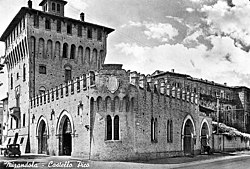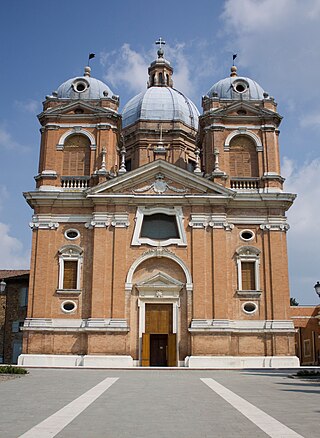
Fiorano Modenese is a comune (municipality) in the province of Modena in the Italian region Emilia-Romagna, located about 45 kilometres (28 mi) west of Bologna and about 15 kilometres (9 mi) southwest of Modena. Neighboring municipalities are Formigine, Sassuolo, Serramazzoni, Maranello.
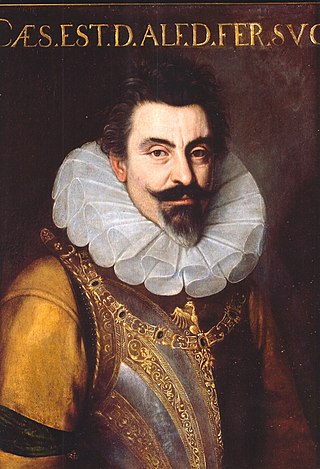
Cesare d'Este was Duke of Modena and Reggio from 1597 until his death.
Cassa di Risparmio in Bologna S.p.A. known as Carisbo, was an Italian savings bank based in Bologna, Emilia-Romagna. The bank was part of Intesa Sanpaolo Group since 2007.
Cassa di Risparmio di Biella (Caribiella) was an Italian regional bank and charity organization, based in Biella, Piedmont. The bank section was merged with Cassa di Risparmio di Vercelli in 1994, while the charity organization, Fondazione Cassa di Risparmio di Biella, still contributes the revenue to Biella and surrounding areas.
Associazione di Fondazioni e di Casse di Risparmio S.p.A. is an Italian banking association. The members were the savings banks of Italy, or the foundation that originate from the reform trigger by Legge Amato.

Cassa di Risparmio della Marca Trivigiana, also known as Cassamarca in short, was an Italian savings bank headquartered in Treviso, Veneto. Due to Legge Amato, the bank was split into two organizations: Cassamarca S.p.A. and Fondazione Cassamarca – Cassa di Risparmio della Marca Trivigiana in 1992. The S.p.A. and the banking foundation were the founders of banking group Unicredito in 1994, a predecessor of UniCredit. The S.p.A. was absorbed into UniCredit in 2002; the banking foundation, survived as a charity organization, as well as owned 0.23% shares of UniCredit, as one of its investments.
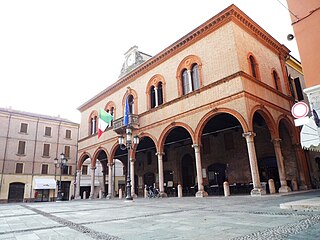
The Mirandola Town Hall is a historic public building located in the city center of Mirandola, in the province of Modena, Italy.

The Bergomi Palace is a 14th-century building in Mirandola, in the province of Modena, Italy.

The Civic Museum of Mirandola is a museum housed in the castle of the Pico in Mirandola, in the province of Modena, Italy, dedicated to the archaeology of the territory, religious commissions, ancient furnishings and paintings, coins and medals of the ancient mint of Mirandola. The museum is also enriched by maps from the 16th to the 20th century, various items from the ancient Mount of Piety of the Franciscan friars and a collection of military relics.

Santa Maria Bianca Hospital is a community hospital located in Mirandola, in the province of Modena, in Emilia-Romagna, Italy.
The Mirandola witch trials took place in Mirandola in the Duchy of Mirandola between 1522 and 1525. It resulted in the death of ten people, who were burned alive at the stake for witchcraft on the square.
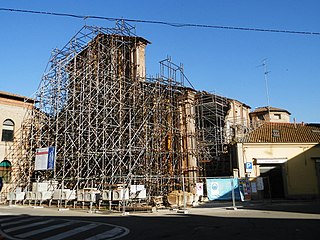
The church of San Francesco is a church located in Mirandola, in the province of Modena, Italy.

The Mirandola mint, also known as the mint of the Pico della Mirandola, was the mint of the Duchy of Mirandola.

Francesco Maria Pico, also known as Francesco Maria II Pico della Mirandola to distinguish him from his father, was an Italian nobleman, third Duke of Mirandola and fourth Marquis of Concordia.
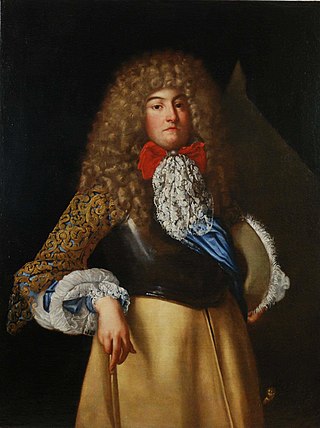
Alessandro II Pico della Mirandola was an Italian nobleman, soldier and patron of the arts, second Duke of Mirandola and third Marquis of Concordia from 1637 until his death.

The siege of Mirandolain 1321, also known as the siege of Duke Passerino, was a military conflict involving Francesco I Pico, first lord of Mirandola, against Rinaldo dei Bonacolsi, better known as Duke Passerino, lord of Mantua.
Francesco I Pico was an Italian condottiero and politician of the Pico dynasty. He was the first lord and imperial vicar of Mirandola (1311-1321), and also podestà and imperial vicar of Modena (1311-12).

The siege of Mirandola in 1355, was a military conflict involving Francesco II Pico, first lord of Mirandola, against Bernabò Visconti.
The siege of Mirandola in 1502 was a military conflict involving Giovanni Francesco II Pico della Mirandola against his younger brothers Federico and Ludovico, who bombarded Mirandola for 50 days. Defeated and imprisoned, Francesco II was released only with the promise of cession of the dominions, then retiring into exile for eight years.
